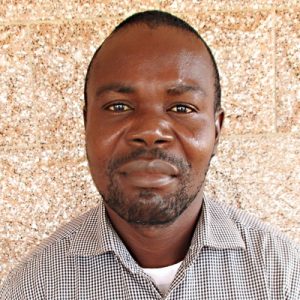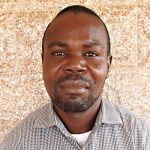The water in Roloko Village is not safe for human consumption.
The swamp was filthy and dirty during our visit. At some point, people have to wait until the water settles before they can access it. And even when the water is returned home, people still need to give it more time for the dirt to settle before drinking it.
"I would not drink from this water source," said Thomas Lewis, reporting officer.
This swamp is located in an area that makes it very tough for certain groups of people to access water. For instance, kids would not be sent alone to this water point for fear of them being attacked by wild animals.
Human activity is the major contaminant for this source. Basically, most people in this village use this source to launder and bathe. In the process, wastewater drains back into the source, and most of the chemicals used in these detergents are harmful to humans.
Moreover, farming activities such as watering can contaminate the source in the sense that they are not careful about the condition of the watering can. Open defecation is a possibility in these villages especially when they are on their farms, and some of these will take place close to the swamp often by the kids.
The majority of households have latrines, but the sanitation condition of the latrines in this village is below average. They are often not clean - the insides are wet since the floors are made of mud. And because they do not cover the pits, there are tons of flies and mosquitoes inside the latrine.
"We are not somehow careful about our hygiene and sanitation. We leave the village very early in the morning, with our compounds unkept. We also do not pay much attention to our latrines because of the excuse that we spend most of our time in the bush," Mr. Abdulia Bangura said.
This community has a very big history.
This is where all Lokomasama Paramount Chiefs are crowned and after this ceremony, that is, when once they are out of this village, these crowned Paramount Chiefs will never step their feet on this land again.
People in this community are predominantly farmers and involved with both swamp farming and bush farming. Mostly they are bush farmers with palm oil production as their area of specialization. They will produce the palm oil and take it to the one-day markets to sell. The proceeds are used to take care of the family.
This is a very Muslim community and most of them will rise very early, about 5:30am to ready themselves for their Suba prayers. At 7am most would be on their way to their farms.
What happens in the farm is dictated by the type of farming and the season. But at 7:30am most of these farmers would be around in the village, some will be readying themselves for their Maghrib prayer and the kids will be playing around. The day is filled with their various farming activities which most family members participate in.
When the children return home from school they help with household chores and caring for little ones and fetching water. The women will prepare the meal. By 10pm most of the people will go to bed after a hard day’s work.
Here’s what we plan to do about it:
Training
There will be hygiene and sanitation training sessions offered for three days in a row.
After our visit, the hygiene and sanitation trainer decided it would be best to teach community members how to build a tippy tap (a handwashing station built with a jerrycan, string, and sticks). They will use these tippy taps for handwashing demonstrations, and will also teach about other tools like dish racks and the importance of properly penning in animals.
These trainings will also build up and strengthen a water user committee that will manage and maintain this well. They will enforce proper behavior and report to us whenever they need our help solving a serious problem, like a pump breakdown.
New Well
This borehole will in Roloko Village, which is the best location because there are no latrines nearby.
Our team will drive over the LS200 mud rotary drill rig and set up camp for a couple of nights. Once the well is drilled to a sufficient water column, it will be cased, developed, and then tested. If these tests are positive, our mechanics will install a new India Mark II pump.
This community has struggled to find clean water to drink. By drilling this borehole, people living in Roloko Village will be provided with plenty of safe drinking water.

 Borehole Well and Hand Pump
Borehole Well and Hand Pump
 Rehabilitation Project
Rehabilitation Project




























